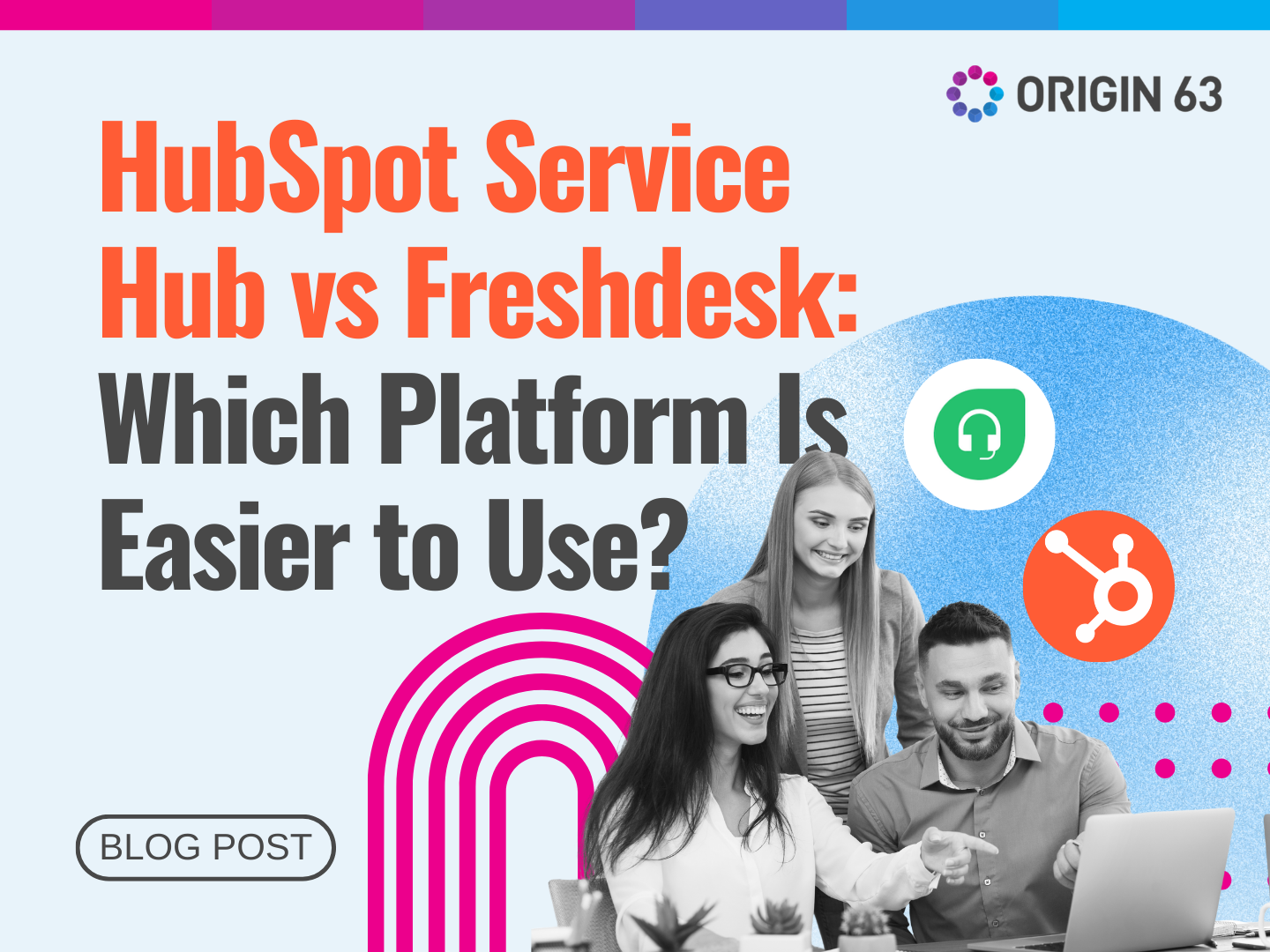Loyal customers keep companies in business. They provide repeat purchases, rave about you to their friends, and offer feedback to help improve your business.
But you can't take such loyalty for granted — you need to work hard to earn it.
The good news? You can transform average customers into enthusiastic advocates who feel connected to your brand. This guide shares proven strategies to help you build real relationships and foster devotion.
If you consistently put customers first and apply these tactics, you'll be on the road to cultivating bonds that drive referrals, retention, and success.
Understanding Customer Relations
Customer relations is how your business connects with people. It covers all the experiences someone has with your company — from first learning about you through marketing, to sales conversations, to ongoing support.
It goes beyond transactions and focuses on relationships. It means taking the time to build rapport and trust with your customers over the long haul.
You have to see things from their perspective, deliver positive experiences, and nurture loyalty. Make them feel valued as individuals, not faceless sources of revenue.
Benefits of Customer Relations
Putting in the effort to build positive customer relationships pays off in many ways. Here are some of the key benefits your business can gain:
Higher Customer Retention and Loyalty
Companies that prioritize customer relations have more loyal customers. According to Statista - a global data and business intelligence platform, 95% of customers were more likely to buy from a brand again after a positive customer experience.
Customers stick around when they feel you care about them and want them to succeed.
Furthermore, long-term customers often spend more over time. As the relationship strengthens, loyal customers will buy products or services more frequently and in higher quantities.
Customers Turn into Advocates
When customers have a great history with your company, they’re proud to recommend you to their family, friends, and social media followers.
Word-of-mouth marketing is a potent tool because consumers have much more trust in recommendations from people they know rather than generic ads. They like detailed stories and anecdotes from real customers that add a personal touch.
The more delighted customers are with their interactions, the wider their positive feedback will spread across their networks.
Improves Customer Satisfaction
It's tricky to know if customers are delighted. Many people, around 58%, just quietly stop buying and don't say why.
However, improving customer relations can avoid churn because it lets you know your customers and consistently meet or exceed their evolving needs.
Meeting customers' needs and going above and beyond to make connections leads to higher satisfaction.
Customers Give More Feedback
When you put effort into making customers feel respected and appreciated, they’re more likely to share their genuine opinions.
Their feedback is constructive because they experience the limitations of your offering firsthand. You can use their innovative ideas to improve products, services, and support creatively.
Strategies for Building Strong Customer Relations
Strong customer relationships are invaluable for business growth. But where should you start?
For a simple starting point, focus on these three key areas: communication, personalization, and timely responses.
Here are some ways to cultivate lasting loyalty and engagement:
1. Clear Communication
Effective, two-way communication is the foundation for any strong relationship, including with customers. You can do two simple things to improve communication.
Firstly, be clear and direct.
Clarity is essential because it sets accurate expectations upfront about products, services, policies, timelines, and costs. You can help customers make informed decisions that fit their needs.
When instructions, agreements, and explanations are clear, customers are confident in your ability to deliver as promised. It also minimizes frustration from hidden terms, unspoken rules, or vague contingencies that surprise them later.
Here are some tips for clear communication:
- Use simple, straightforward language and avoid technical jargon.
- Know your audience and adapt your communication style to their level of understanding.
- Encourage them to ask questions.
Secondly, master the art of active listening.
Active listening demonstrates genuine interest and concern. Customers want to feel heard and understood as individuals. Practicing empathy can make them feel more valued.
Furthermore, listening to what your customers have to say can reveal insights that statistics miss.
To listen actively:
- Don't just wait for your turn to speak. Be genuinely interested and give your full attention when customers talk.
- Ask probing questions to understand context and get to the root of their needs.
- Respond appropriately to show you’re listening.
- Paraphrase back what you heard.
- Acknowledge emotions behind words.
Strong communication skills take practice but are worth the effort. When customers feel you "get" them and have their back, the relationship deepens based on trust and mutual understanding.
2. Personalization
Personalizing interactions makes customers feel truly valued as individuals, not just another transaction.
Taking the time to tailor communications, offers, and recommendations based on preferences, purchase history, demographics, and other data shows you care about their unique needs. Beyond boosting satisfaction, personalization breeds trust and emotional connection.
While it requires effort, the ROI in strengthening customer relationships is immense. Loyal customers who feel special remain highly engaged, spend more, refer others, and forgive mistakes.
Besides, you don’t need to go straight to big gestures. You can easily make customers feel recognized with small touches like using their name, acknowledging loyalty, and surprising them with relevant perks.
Here are other ways to personalize interaction:
- Use CRM data to address customers by name and reference details like location, purchase history, preferences, etc.
- Tailor recommendations to what a customer has liked before — don't rely on generic suggestions.
- Train staff to recognize frequent/VIP customers and acknowledge their loyalty. Small gestures go a long way.
- Customize onboarding, content, and promotions based on characteristics like demographics, psychographics, and past interactions.
- Hyper-personalize with unique offers like birthday/anniversary perks or callbacks to previous conversations.
- Surprise and delight with random acts of kindness like complimentary upgrades or shipping.
3. Timely Responsiveness
Customers now expect businesses to be accessible and responsive at all times. Long wait times or delays in resolving issues can frustrate and disengage them. On the other hand, promptly answering questions and resolving complaints tells them that you respect their time.
Some steps to meet this customer expectation include:
- Set clear, service-level expectations, then meet or exceed them.
- If delays occur, be proactive and transparent in communicating causes and new timelines to reassure customers.
- Empower all staff to resolve common issues directly without hold times or transfers.
- Have clear escalation procedures for promptly addressing complex inquiries. Keep customers looped in.
- Take ownership of problems and avoid finger-pointing. Customers just want a quick, stress-free resolution.
Responsiveness requires internal speed and coordination, but nothing fosters customer loyalty like the feeling of being a valued priority. If you’re responsive, you build customers’ confidence and trust in your commitment.
Leveraging Technology to Strengthen Customer Relations
Personalizing interactions and promptly responding might seem easy when you only have a handful of customers. However, what happens if your customer base expands and becomes challenging to manage?
The solution is leveraging technology to streamline your process. An effective way to do so is using Customer Relation Management (CRM) systems like the HubSpot Service Hub.
A CRM system helps streamline your process by organizing all customer information in one place. It keeps track of your interactions and relationships with customers. It also centralizes customer data and communication to enable personalized, responsive service.
Innovate with HubSpot Service Hub
If you’re looking for software to manage your customer interactions seamlessly, HubSpot Service Hub is one of the top choices. It brings together different tools like shared inbox and support tickets, making it easy to solve problems and connect with customers.
Unlike other CRM tools, HubSpot links messages to a unified service channel, giving you a complete view of each customer's ticket and chat history. You can then offer them new products or services that they might like based on past interactions.
5 Remarkable Benefits of HubSpot Service Hub
HubSpot Service Hub gives you the tools to unify service channels, organize and collaborate, tap into customer wisdom, listen to their feedback, and track how you're doing. This combination helps you deliver friendlier, faster, and more personalized support.
Here are the benefits of using the HubSpot Service Hub:
1. Bring All Your Conversations Into One Place
HubSpot Service Hub's Conversations tool lets you see chats, emails, social messages, and more in one unified inbox. This shared inbox makes it easier for your team to handle questions without switching between platforms.
Customers get quicker, more personalized support since teams have the complete history right there.
2. Organize Support Tickets and Requests
Keeping up with all the customer emails and chats gets more complicated as your business grows. Fortunately, using Service Hub's Help Desk & Tickets lets you automatically turn these interactions into organized tickets.
You can assign tickets to the right people, set priorities, collaborate with your team, and track progress. It keeps everyone on the same page so you can take care of every customer.
3. Empower Customers to Help Themselves
Have customers asked the same questions repeatedly? Service Hub's Knowledge Base lets you take common queries and turn them into helpful articles on your website.
Now, customers can self-serve to find answers quickly. Your team saves time and gives customers a better experience.
4. Listen to Feedback and Make Improvements
Do you want to deliver excellent service to improve customer relations? You've got to know what your customers think.
Service Hub makes doing so easy with built-in surveys like Net Promoter Score (NPS) and Customer Satisfaction (CSAT). Collecting feedback highlights what you're doing right and opportunities to improve. It helps you take action to keep customers happy.
5. Track Service Performance
With the HubSpot Service Hub's reporting dashboards, you get insight into response times, ticket workload, knowledge base use, and more. These metrics help you optimize processes, identify bottlenecks, and improve customer satisfaction. Now, you can truly measure how your service stacks up.
Quick Start Tutorial for HubSpot Service Hub
1. Sign up with a free account and invite your team members.
2. Set up your knowledge base domain. Your knowledge base contains a customer service library all about your products and services to help your customers find answers. To get started, customize your domain, visitor access, and language.
3. Next, connect your personal inbox. Name your unified inbox and add team members who need access. You can edit the email address for the inbox or connect to other channels like Facebook Messenger or WhatsApp to send and receive messages.
4. Install the HubSpot tracking code. This code is unique to your account and lets you monitor website traffic. If you have websites or landing pages outside of HubSpot, you need to install the tracking code to see its data on Service Hub.
If that sounds overwhelming, you can partner with Origin 63, and we’ll give you the guidance and advice you need to get the best out of Service Hub!
Experience HubSpot Service Hub with Origin 63
As a Diamond-level HubSpot partner, Origin 63 can help you realize the full potential of HubSpot Service Hub.
Our certified HubSpot experts can guide you through every step, from initial implementation to ongoing optimization.
With Origin 63, you get a dedicated services team that becomes an extension of your own. Our experts become your coaches, providing hands-on guidance to customize, integrate, and maximize Service Hub for real business impact.
We tailor the platform to your teams’ workflows so adoption is seamless. Then we train your staff through onboarding and ongoing education.
Our goal is simple – ensure you utilize the full capabilities of Service Hub to wow your customers. With the right guidance, your agents can deliver exceptional customer experiences.
Wrap-Up
Good service earns you customers, but exceptional service earns loyal brand advocates. But it takes more than just good intentions — you need commitment, strategy, and the right technology.
This is where a tailored CRM like HubSpot Service Hub comes in. It provides you the tools to transform the customer experience, with features like a unified inbox, knowledge base, and reporting dashboard.
With guidance from Origin 63, Service Hub gives your staff the tools to seamlessly track interactions, gather insights, delight customers, and nurture lasting loyalty.
Connect with Us and Begin the Transformation of Your Business
You don’t need to do it alone. Origin 63 can guide you in implementing Service Hub to transform your customer experience.
Contact us to explore how Service Hub's tools for ticketing, feedback, and knowledge management can enhance service delivery.
Let's discuss your goals and develop an action plan to strengthen customer loyalty.













.png?width=90&height=90&name=Arrows%20Partner%20Badge-test%20(1).png)

